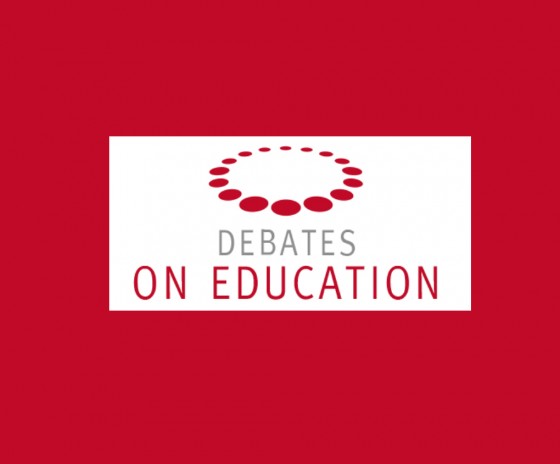Debates on Education with Steven Hodas , Former executive director of the New York City Education Department's Office of Innovation. Between 2012 and 2014, he was creator of personalized learning technology platforms and advisor to public and private educational organizations in iZone a project aimed at providing support to publicly funded schools in the use of innovation and technology to solve the principal learning problems, aiming for personalization.
Event organized by the Universitat Oberta de Catalunya (Open University of Catalonia) and the Jaume Bofill Foundation, with the collaboration of MACBA. http://www.debats.cat, #debatseducacio
Summary
Background
In 2010, the New York City Education Department set up iZone, a project aimed at providing support to publicly funded schools in the use of innovation and technology to solve the principal learning problems, aiming for personalized solutions.
In 2012, Steven Hodas joined the project as executive director of the Innovation Office at the New York City Education Department. He was responsible for enriching the programme by developing a powerful strategy to weave ties between the schools and the market of technology developers working to provide innovation in education.
iZone is geared towards better meeting the needs, motivations and virtues of each individual child, and not simply students in general. The aim is not to find a one-size-fits-all solution for all schools, but to work with the community to determine the best ideas, technology and tools for each individual student, teacher and school, and to do it quickly.
Based on this model, user schools can design personalized learning for every student, access a wide variety of resources and head towards greater collaboration between students, teachers and families.
What is the iZone methodology?
- The problems are defined directly by those involved: teachers, students, families, etc. According to Hodas, “if the solution must be simple, we need to speak to the people for whom the solution must be simple”.
- The companies/start-ups responsible for developing the prototypes to solve the problems were given the freedom to address the problems in the manner they considered appropriate. Consequently, the companies had to use their know-how and creativity to propose the most appropriate tools.
- They work in a collaborative and cooperative manner. The education community works directly with the developers (the developers enter the classrooms). This generates trust, given that the education community will more readily accept solutions they have been directly involved in. This is a break from the sense of exclusion caused by solutions/products that are imposed from the outside.
- The projects have to be implemented rapidly in order to solve the problems of the moment. There is no need to wait to be absolutely certain that it will work. According to Hodas, “quick and crude is better than slow and refined. We do not need to seek perfection, but to question the things that did not work in the past”.
- We are playing down the importance of errors. We need to be willing to make mistakes. If the solution does not work, we discard it and try to find another one.
What are the success factors of the iZone model?
- We are working to come up with personalized solutions adapted to the problems of each school and its students at a given moment.
- The actions are fast because they use a quick method of evaluation to determine the efficiency of the products in responding to the needs.
- The schools and companies that work in iZone gain prestige because they achieve major solutions. Approximately 300 schools belong to iZones; it is a large and solid community which has served as an example for others.
- It stimulates the development of the technology market applied to education (entrepreneurs, investors and innovators) and ensures a rich and relevant offer of tools and solutions for educators.
What barriers might we find to developing strategies of this type?
- Traditionally, schools are not innovation centres. They are structured to implement education policies that are imposed upon them. In addition, teachers are often not enthusiastic about change. On the other hand, many parents behave in a conservative way because they do not like their children to be experimented on.
- Generating the habit of applying technological innovation by collaborating directly with the developers requires time and leadership. Otherwise, the changes will not be sustainable and scalable and a possible change of education policy will signal the end of the projects.




